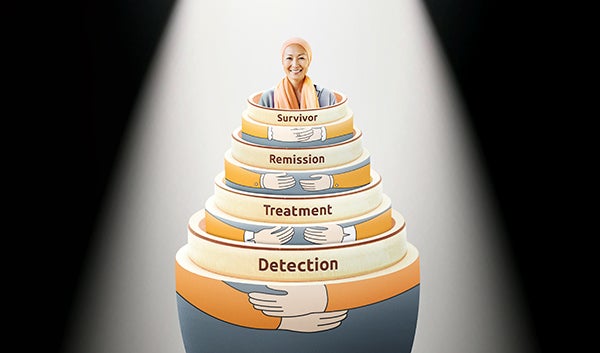Let’s Talk About Life Insurance in Your 20s
Navigating your 20s can be a mix of challenges and opportunities. The world seems ripe with opportunities laying at your feet.
You might be starting a new job, figuring out your passions, or just enjoying the journey of adulthood. Amid all this, life insurance seems like a distant concern, right?
Well, before you tap/swipe/click away, consider this: life is unpredictable and, while we’re all for living in the moment, a little smart preparation can go a long way to securing your future.
Life insurance is there to make sure that no matter what twists and turns life throws your way, you’ve got a safety net in place.
Let’s take a look at why it’s worth considering life insurance sooner rather than later.
Isn’t It Too Early for Me to Get Life Insurance?
Absolutely not!
An important factor in getting life insurance early is that age and health play important roles in determining your premiums.
The younger and healthier you are, the lower your premiums will likely be. By getting life insurance in your 20s, you can possibly lock in lower rates for the duration of your policy.
Think of it as locking in a lower price on your favourite streaming service for life.
Ensure Future Insurability
Another reason to get life insurance early is to ensure future insurability.
This means that by securing a policy in your 20s, you're effectively ensuring that you are covered against unexpected health issues that could arise later in life.
For instance, if you get life insurance only after have suffered from certain health issues, those health conditions are likely to be excluded from the plan’s coverage.
Having this foresight and starting early can help mitigate the risk of becoming uninsurable due to future health issues that commonly arise with age.
How Does Life Insurance Benefit Me as a Young Adult?
Life insurance is essentially a financial safety net that catches you and your loved ones in unexpected times, such as when death or total and permanent disability occur.
The best thing is that you can choose the life insurance plans and riders that provide the benefits and coverage areas that are suitable for your needs, regardless of your current life phase.
Let’s take a look at what they are.
If You’re Enjoying Single Life
Even if you don’t have dependants, you could still have financial obligations at this stage, such as repaying student loans or other forms of personal debt. With life insurance, should anything unexpected happen to you, your family members won’t be burdened to repay those loans even after you’re unable to do so.
If You’re Planning for Marriage
If you’re planning to settle down with your partner, life insurance can help to cover shared expenses, debts, loans, and mortgages to ensure that each partner will not be left financially-strained in the event of the other’s untimely passing. Especially because they still have a long path ahead of them, this will help your partner maintain their lifestyle without needing to cut back due to the sudden, heavy financial burden that may arise in such a scenario.
Some types of life insurance also have a cash value that could serve a secondary purpose of being a financial safety net — it provides a peace of mind that your finances are secure, which could be handy for emergency scenarios.
If You’re Married or a Parent
Once you’ve children who depend on you for financial support, it’s easy to see how life insurance can play an important role.
Should anything unexpected happen to you, life insurance provides financial support to your loved ones to ensure their standard of living is maintained.
As part of your financial plan for your family, some life insurance plans also serve an added benefit of building up cash value to help with your children’s future education expenses, or as part of your strategy to ensure your family’s financial future is secure.
Other Benefits of Life Insurance Plans to Know About
Total and Permanent Disability (TPD), terminal illness, and critical illness coverage
These options offer additional layers of protection, covering scenarios where you might be unable to work due to severe illness or injury, acting as in income replacement and providing financial stability during difficult times.
Note that critical illness coverage could be in a main plan (such as Income’s Complete Critical Protect or Complete Cancer Care) or as a rider to a life insurance plan (think of it like a paid add-on).
Premium Holidays
Some policies include features like premium holidays, allowing you to take temporary breaks from premium payments while still getting covered during times of financial hardship or joblessness.
Mental Illness Coverage
For a holistic protection of both your mental and physical health, look out for life insurance plans that include mental illness coverage. One such solution is Income’s Complete Life Secure, which offers a payout of 30% of the rider’s sum asssured1 for specified mental conditions with its Early Critical Secure rider. This can come in handy during an unexpected crisis, such as covering daily expenses in situations where one is unable to continue working.
So… Should I Choose Term or Whole Life Insurance?
There are two main types of life insurance plans — term life and whole life.
As you will see, these 2 types of life insurance plans are quite different. Understanding the basics and how they compare can help you make an informed choice that aligns with your financial goals.
Here’s a closer look at each type of life insurance plan.
| Feature | Term life insurance | Whole life insurance |
| Coverage period | Specified period (e.g. 10, 20, or 30 years) | Lifetime |
| Purpose | Protection only | Protection and the potential to grow savings |
| Premiums | Lower, fixed for the term (premium may increase with age) | Higher, fixed for life |
| Cash value | No cash value | Builds up over time and can be withdrawn |
| Investment component | No | Yes, but only in participating policies* |
| Flexibility | Some policies allow conversion to whole life insurance | Some policies provide the option to encash the cash value upon reaching a certain age |
| Suitability | For those seeking affordable, coverage to protect against financial burdens during specific periods | For those looking for lifelong coverage with added benefit of cash value accumulation |
*A participating life policy is a type of policy that enables customers to share the profits of the insurer in the form of bonuses. Premiums are pooled to form the Life Participating Fund and the fund is invested in a mix of assets and pays benefits to the customers. However, the bonuses are not guaranteed and depend on the performance of the fund's investments, claims made, and incurred expenses2.
We offer a wide range of term life and whole life plans that cater to your financial goals. You can also speak to our insurance advisor to find out more on how to tailor each plan to your personal needs.
If You Wish to Have Potentially Higher Returns on Your Investment
You can also consider investment-linked plans (ILPs), which serve 2 purposes of life insurance protection and investments. In that sense, ILPs help keep you protected, while also accumulating wealth.
ILPs could potentially provide higher returns than participating life policies, but with increased investment risks.
However, if you require more coverage beyond the life insurance protection component provided by the ILP, you could supplement your ILP with another term or whole life plan.
Life Insurance Seems Pretty Useful Now, Doesn’t It?
Life insurance ensures that, should the unexpected happen to you, any financial burdens — be it student loans, a mortgage, or even daily living expenses — aren't passed down to your surviving family or dependants. It's a way of looking out for them, making sure they're not left in a difficult position should something happen to you.
It’s not simply about financial protection in bad times though. Starting a life insurance plan in your 20s can be a savvy move for your financial portfolio. Some types of life insurance could accumulate cash value over time. This offers you a potential pool of money that you can tap on later in life.
Your phase in life or type of lifestyle is typically different from the next person’s, which is why we have a variety of life insurance plans that you can choose from — this is important to cater to your unique goals and requirements.
If in doubt, you can speak to our Income Insurance advisors to work out a plan tailored to your needs.
1 For policies issued by us that include Special Benefit or Special and Mental Benefit, we will pay no more than the maximum claim limit for the same condition or procedure for each insured, no matter how many of such policies we have issued to cover the same insured.
At most, we will pay the Special Benefit five times, as long as each claim is not for the same Special Benefit as any of the earlier claims.
At most, we will pay the Mental Benefit three times, as long as each claim is not for the same Mental Benefit as any of the earlier claims. In addition, for each claim under the Mental Benefit as listed in the policy conditions, the diagnosis of the conditions must be at least 3 years apart.
Please refer to the policy conditions for further details.
2 Source: https://www.lia.org.sg/tools-and-resources/faq/savings-investment/
This article is meant purely for informational purposes and does not constitute an offer, recommendation, solicitation or advise to buy or sell any product(s). It should not be relied upon as financial advice. The precise terms, conditions and exclusions of any Income Insurance products mentioned are specified in their respective policy contracts. Please seek independent financial advice before making any decision.
These policies are protected under the Policy Owners’ Protection Scheme which is administered by the Singapore Deposit Insurance Corporation (SDIC). Coverage for your policy is automatic and no further action is required from you. For more information on the types of benefits that are covered under the scheme as well as the limits of coverage, where applicable, please contact Income Insurance or visit the GIA/LIA or SDIC websites (www.gia.org.sg or www.lia.org.sg or www.sdic.org.sg).
This advertisement has not been reviewed by the Monetary Authority of Singapore.










